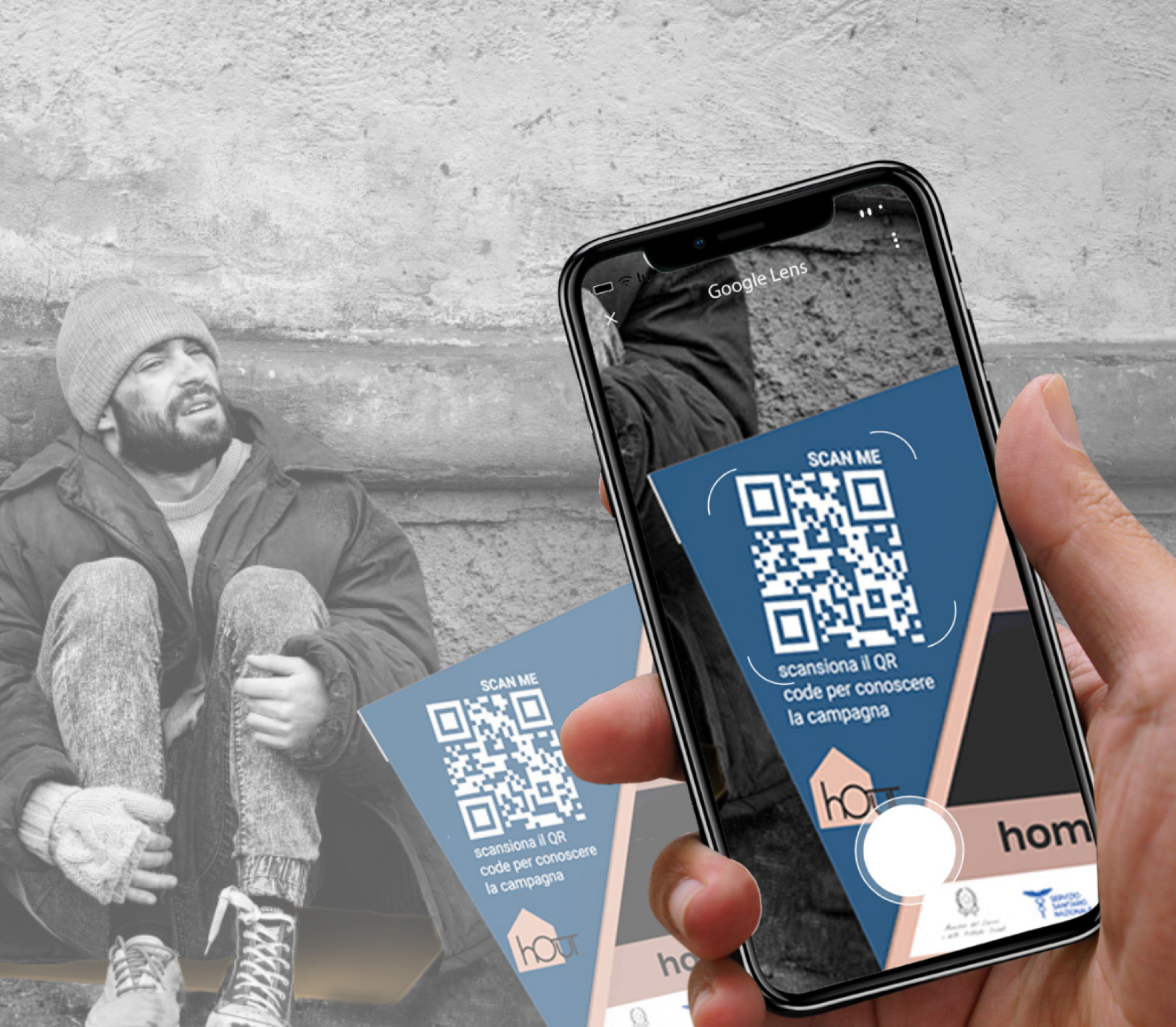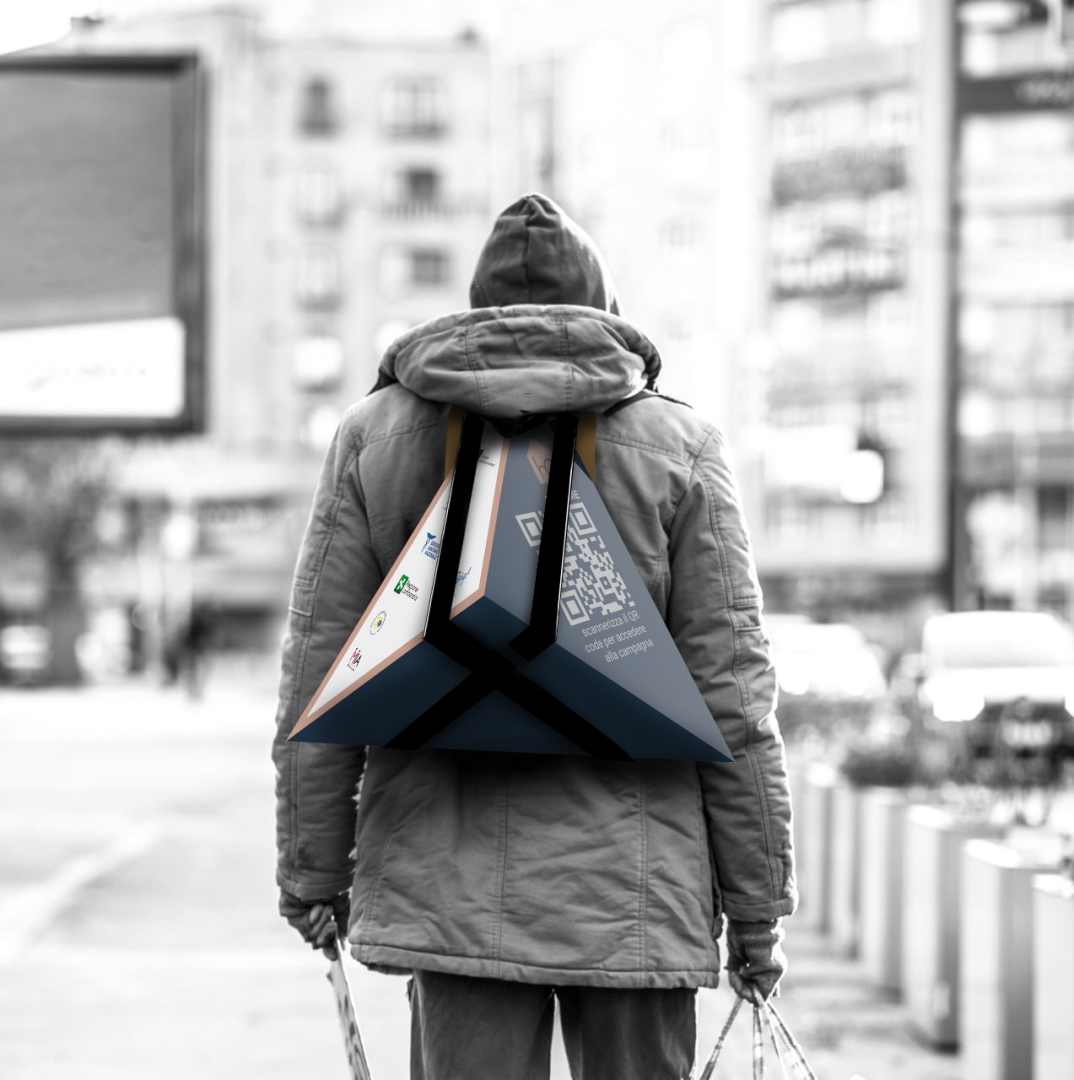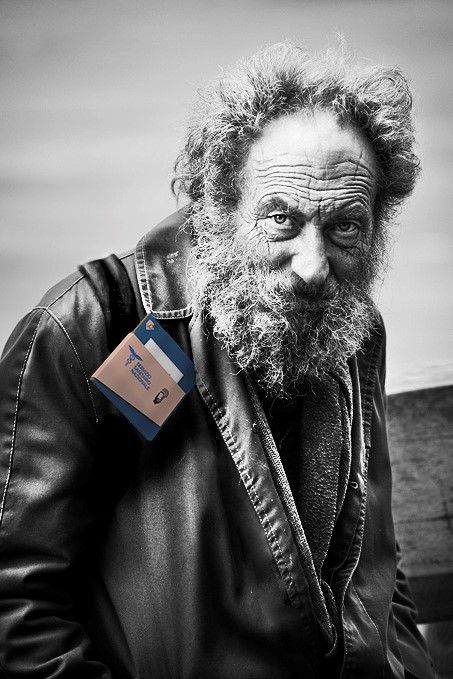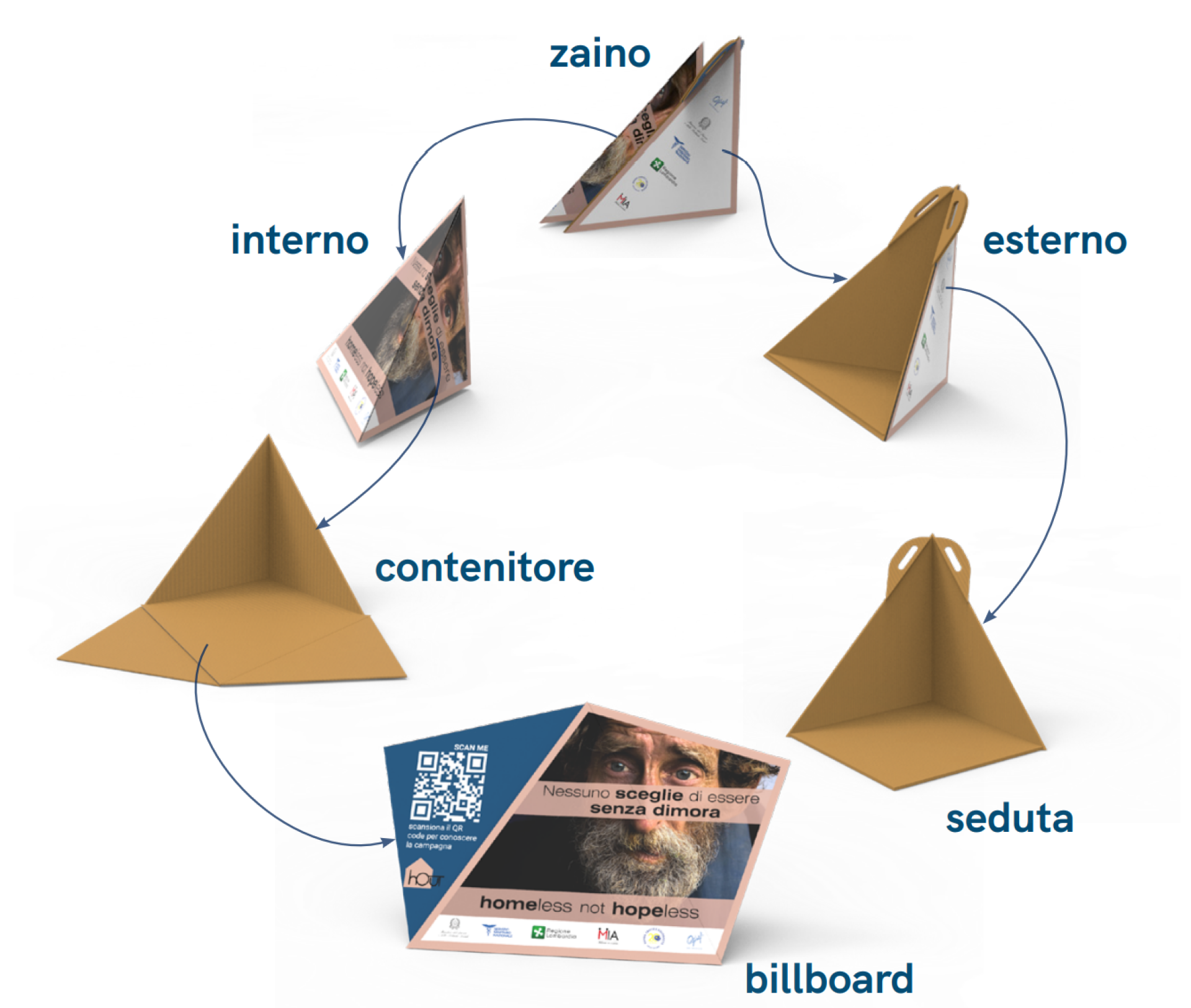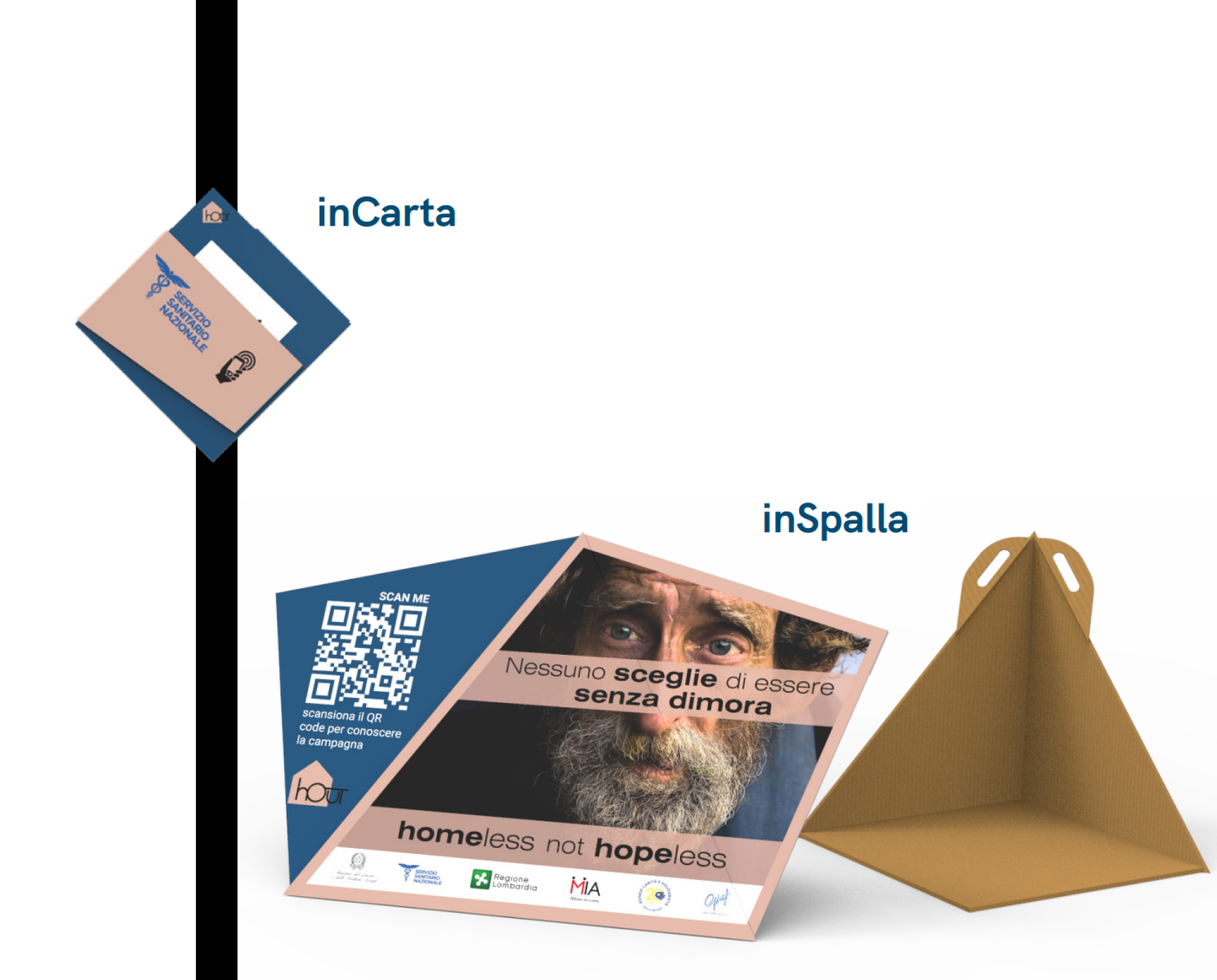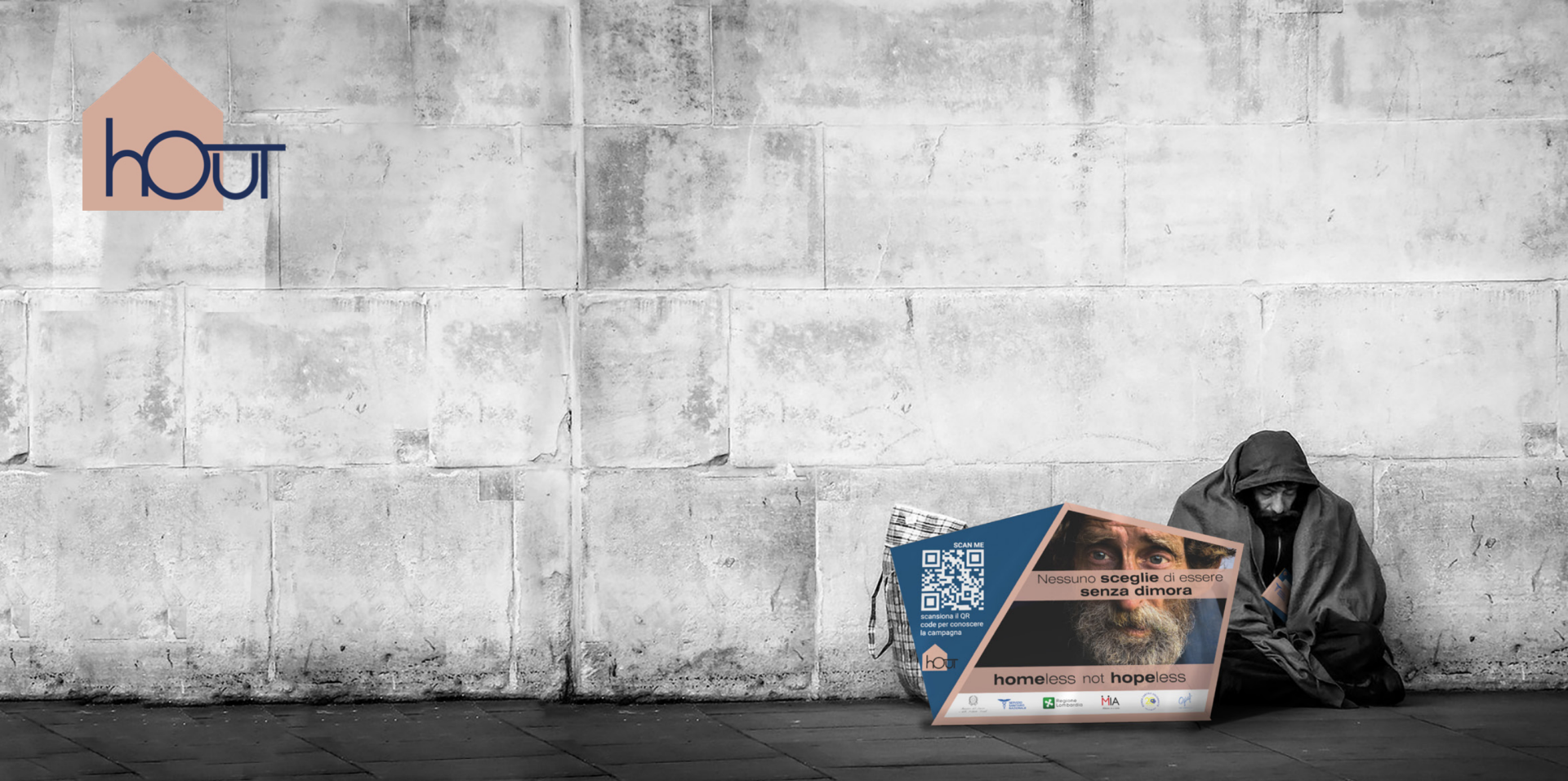hOUT
Basic information
Project Title
Full project title
Category
Project Description
hOUT is a product/service that addresses the issue of homelessness both in the short term, through a direct approach to meet the immediate needs of the homeless, and in the long term, through an awareness campaign aimed at changing society's approach to this phenomenon.
This campaign is implemented in the streets by the protagonists of this phenomenon themselves, helping to create a direct and sincere relationship between homeless people and passers-by.
Geographical Scope
Project Region
Urban or rural issues
Physical or other transformations
EU Programme or fund
Which funds
Description of the project
Summary
The hOUT project stems from the desire to seek both immediate and long-term solutions that through design can bring relief to the problems of everyday life of those who live on the street.
Through a sociological and anthropological research in the field of homelessness, I came to understand the vastness and importance of social issues and help to the homeless that in Italy as in Europe are many, difficult to count and growing.
hOUT is an immediate product/service that combines direct help to the homeless with the diffusion of an awareness and information campaign.
hOUT is composed of two devices, inSpalla and inCarta.
inSpalla is designed to perform, thanks to its different configurations, in the moments of movement through the city becomes a backpack to store personal effects, while in the stops in the street is an information board and minimalist seat.
This billboard illustrates the awareness campaign and a large unique QR code for each device that can be (at the discretion of the individual homeless person) associated with a personal online page available to each homeless person within the site of the information campaign. Through this page the person has the opportunity to express themselves and tell their story to the outside world, creating an almost personal relationship of knowledge and understanding with passers-by curious about the QR code.
inCarta is the second device of the hOUT project, designed to act as a document holder and facilitate health care for homeless people.
It is designed to keep safe and always available (hooked to the shoulder of InSpalla) the cards and identity documents, essential to access social assistance services in the territory. InCarta also has an NFC tag that allows digital connection to a personal page of the homeless patient's medical history. This online page will be accessible only after authentication by the health staff, who in this way will be able to intervene promptly and more effectively to the necessary care.
Key objectives for sustainability
The hOUT project consists of two basic components, InSpalla and InCarta, each of which is made of recycled cardboard as the main material.
InSpalla is also equipped with recycled cotton belts that can maintain their functionality for many years and do not need to be replaced.
In addition to corrugated cardboard, InCarta has an NFC tag, an electronic device that does not require batteries or electricity and can be easily separated from the cardboard thus allowing its total recyclability. The lack of batteries and electricity are not only fundamental for the project since homeless people often do not have easy access to this type of goods, but above all in this way the device does not produce waste and does not need to replace electrical components.
Despite the fact that cardboard is a material that can easily lose its physical properties if exposed to atmospheric agents, it is important to note that it is also extremely recyclable, easy to transport (and therefore less polluting), readily available throughout Europe (therefore not requiring long-distance transport) and economical.
Key objectives for aesthetics and quality
hOUT is a project that focuses on achieving functional objectives, thanks to and despite this fundamental characteristic the concept is also able to pursue fundamental aesthetic goals.
In order to capture the attention of passers-by and encourage them to scan the unique QRcode, it is essential that the InSpalla device is able not only to attract attention but also to stand out in a potentially chaotic environment such as the street through a simple and refined aesthetic, able to capture the eye without becoming tacky or excessive.
These are devices that homeless people must find useful to the point of carrying them around the city, and the aesthetics must also follow this functionality while maintaining the ability not to attract excessive attention at all times but only in a targeted manner.
Through the use of portraits of homeless people on the front of the billboard hOUT aims to focus the attention of passers-by on the humanity of these people that according to anthropological and sociological studies often become almost invisible, considered almost as urban furniture and ignored, dehumanizing them.
The InCarta device on an aesthetic level has the functionality to be recognizable at all times, through the colors and logo of the campaign should be possible for a health worker to locate the device in a few seconds even in emergency situations in which the homeless may have lost consciousness for example.
Both hOUT devices seek a balance between the need to attract attention when necessary and the need not to continually shine a spotlight on the homeless person who may be experiencing discomfort as a result.
Key objectives for inclusion
The fundamental objective of hOUT is the social inclusion of one of the categories of people most in difficulty in our society: the homeless.
These are people who live on the margins of society and experience daily difficulties due to their condition, due to the lack of a home as a place of privacy and security, due to the lack of socialization and consideration by society that often tends to exclude them.
hOUT wants to be a project able to help these people in the problems that affect their daily life, such as the need to carry their belongings while moving around the city, but also with a long-term vision, with the aim of contributing to a change of vision of this phenomenon and then to a greater intervention in this problem so complex and widespread.
hOUT is proposed as an economic project that can be proposed to all homeless people who interact with the assistance services on the territory and that represents a link between the need for immediate intervention and the need for long-term interventions at the state level with policies aimed at reducing extreme poverty and assisting people living in situations of social marginality.
Physical or other transformations
Innovative character
The three dimensions of environmental sustainability, aesthetics and quality of experience and inclusion are the pillars of hOUT.
Through the use of 100% recyclable materials, combined in the construction of two devices designed to perform not only physical functions and immediate utility, but also information and advertising campaign hOUT comes to bring assistance to a segment of the population among the most marginalized and excluded.
The problem of homelessness has been interpreted by design in very different ways, but hOUT is innovative precisely because it is up-to-date, recyclable, able at the same time to understand the need for an immediate response to the problems of life on the street, but also to take and make people aware of the problem in the long term, encouraging through its simple and direct aesthetics the reconstruction of the bond between homeless people and society.

